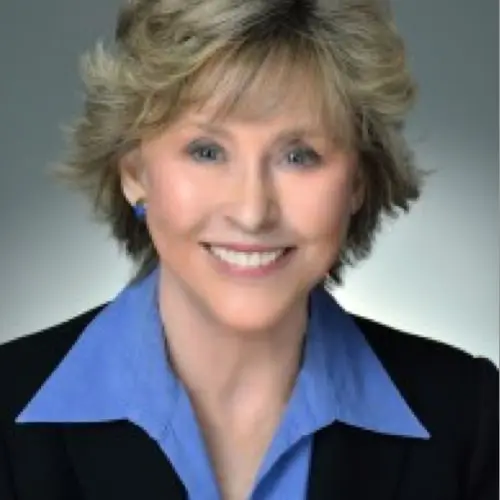
Five Techniques for Successful Team Communication
Teams typically outperform individuals because they benefit from the team’s collective IQ as well as a variety of backgrounds, viewpoints, skill sets, and perspectives. Ideally, teams make everyone feel that he or she has a voice in outcomes, thereby democratizing organizations, enhancing the learning process, and inspiring commitment.
However, we may have been on dysfunctional teams, and in many cases, we end up frustrated and wishing that we could just do the work ourselves.
No matter how talented team members may be, if a team does not put some communication guidelines in place, it can quickly become dysfunctional. On a team, you can’t just let water seek its own level when it comes to effective communication. The entire team needs to be intentional about creating a climate for clear communication. Here are some communication strategies for success.
Build trust first.
When we trust someone, we feel safe. And, when we feel safe, we are willing to open up. Without trust, communication will be superficial and tentative. Many times what we say is just the tip of the iceberg. What is important is the reason that we said it. That’s what makes an iceberg so scary. The real deal is underneath the water.
So, when a team member says “I don’t like this template you are using for our PowerPoint presentation, what she may really mean is “I’m upset because you didn’t ask my opinion before you chose it.”
Teams can build trust by talking openly about their likes, dislikes, fears, concerns, and pet peeves. Trust increases when team members can share these feelings without receiving strong negative reactions, a contemptuous response from others.
Establish clear communication ground rules.
Of course, communication is more complicated when several people are trying to work on something together. For that reason, setting ground rules for communicating in a team environment is critical for successful interaction. Identify each person’s preferred communication vehicle. Does Carla prefer a text message to an email? Does Jason check email only twice daily but always has his cell with him?
Further, team members should agree on how quickly they should respond to each other. Going off the grid is not acceptable in an interdependent environment. Certainly, it is appropriate to let team members know if you are going to be unavailable for a period but simply disappearing creates frustration and anger from those team members who need someone to be available and engaged
Team members should also commit to seeking and sharing information. If you miss a meeting, don’t wait for everyone to bring you up to speed and then sulk if you aren’t in the loop. Although the team should make sure that absent members know what is taking place, it is also that person’s responsibility to be assertive in finding out the latest developments.
Acknowledge and accommodate communication style differences.
Many factors affect the way we communicate—age, culture, gender, language, and personality to name a few. Moreover, being unaware of those differences can create significant barriers to effective team communication. (Renie McClay, 10 Steps to Successful Teams, 31).
Some team members love to talk, often generating ideas while they are still thinking about the topic. Others prefer to digest information and synthesize it before speaking. They may not say much in a brainstorming session, but they often can pull together what appear to be everyone else’s random comments.
Certain team members may be naturally assertive. Coming from them, a suggestion sounds like a command, and they relish a lively argument. Other team members may shy away from taking on that person who seems so confident.
Not only should individual team members analyze their own communication styles, but the team should also talk openly about these differences and find a way to accommodate everyone so that each person can make a significant contribution.
Develop and implement a process for dealing with conflict.
The clearer and more open the communication, the greater the chance for disagreement. Often, our tendency is to shut down or choose sides when team members find themselves at odds with each other. Team members owe it to each other and to the success of the team to make sure that conflicts stay issue based and solution focused.
Keeping personalities out of conflict is easier said than done, but the entire team needs to be sure that words and actions from all members don’t fuel the conflict. If someone on the team feels hurt or angry, everyone should make sure that the person addresses the source of the problem directly rather than carping to other colleagues.
Recognize that stress exacerbates the climate for conflict, and team members should always strive to know when to pursue an issue and when to let it disappear on its own.
Spend some time communicating on a personal level.
Strong relationships contribute to team success and will help minimize both the occurrence and seriousness of conflict. Although the relationship among team members is primarily business, teams are stronger when members appreciate and value each other as people.
Finding areas of common interest and communicating about non-work related topics can build bonds that will see teams through difficult projects. Showing a concern for illness in the family or celebrating the achievement of a team member’s child can go a long way toward creating a solid, cohesive unit. Some social interaction, such as a birthday celebration for team members is not only appropriate but also makes everyone feel a part of a community.
Without effective team communication, even the most talented group of people cannot reach their full potential. The extra effort that teams spend creating an excellent environment for communication can pay big dividends in the early days of team formation as well as in forging long-term relationships.

Beverly

Beverly Y. Langford is President of LMA Communication, Inc.® a consulting, training, and coaching firm that works with organizations and individuals on strategic communication, message development, effective interpersonal communication skills, team building, and leadership development.